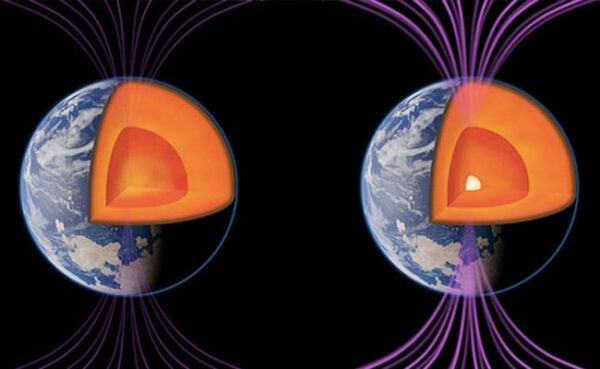Scientists Discover Massive “Ocean” Near Earth’s Core
Scientists have observed a reservoir of water 3 instances the extent of all of the oceans below the Earth’s floor, in keeping with an worldwide look at. The water has been observed among the transition sector of the Earth’s higher and decrease mantle. The studies crew analyzed a fee diamond shaped 660 meters underneath the Earth’s floor the use of strategies inclusive of Raman spectroscopy and FTIR spectrometry, ANI reported. The look at showed some thing that for a long term it changed into only a theory, specifically that ocean water accompanies subducting slabs and as a consequence enters the transition sector. This approach that our planet’s water cycle consists of the Earth’s interior.
“These mineral ameliorations significantly restrict the moves of rock withinside the mantle,” explains Prof. Frank Brenker from the Institute for Geosciences at Goethe University in Frankfurt. For example, mantle plumes — growing columns of warm rock from the deep mantle — on occasion forestall immediately underneath the transition sector. The motion of mass withinside the contrary route additionally involves standstill. Brenker says, “Subducting plates frequently have issue in breaking thru the whole transition sector. So there’s an entire graveyard of such plates on this sector beneath Europe.”
However, till now it changed into now no longer recognised what the long-time period consequences of “sucking” fabric into the transition sector had been on its geochemical composition and whether or not large portions of water existed there. Brenker explains: “The subducting slabs additionally convey deep-sea sediments piggyback into the Earth’s interior. These sediments can maintain big portions of water and CO2. But till now it changed into uncertain simply how lots enters the transition sector withinside the shape of greater stable, hydrous minerals and carbonates — and it changed into consequently additionally uncertain whether or not big portions of water clearly are saved there.”
The triumphing situations might sincerely be conducive to that. The dense minerals wadsleyite and ringwoodite can (in contrast to the olivine at lesser depths) save big portions of water- in truth so big that the transition sector might theoretically be capable of take in six instances the quantity of water in our oceans. “So we knew that the boundary layer has an large potential for storing water,” Brenker says. “However, we failed to recognise whether or not it clearly did so.”
An worldwide look at wherein the Frankfurt geoscientist changed into concerned has now provided the answer. The studies crew analysed a diamond from Botswana, Africa. It changed into shaped at a intensity of 660 kilometres, proper on the interface among the transition sector and the decrease mantle, wherein ringwoodite is the triumphing mineral. Diamonds from this location are very uncommon, even the various uncommon diamonds of super-deep origin, which account for best one in step with cent of diamonds. The analyses found out that the stone includes severa ringwoodite inclusions — which showcase a excessive water content. Furthermore, the studies organization changed into capable of decide the chemical composition of the stone. It changed into nearly precisely similar to that of in reality each fragment of mantle rock observed in basalts everywhere withinside the world. This confirmed that the diamond truely got here from a everyday piece of the Earth’s mantle. “In this look at, we’ve got confirmed that the transition sector isn’t always a dry sponge, however holds large portions of water,” Brenker says, adding: “This additionally brings us one step towards Jules Verne’s concept of an ocean withinside the Earth.” The distinction is that there’s no ocean down there, however hydrous rock which, in keeping with Brenker, might neither experience moist nor drip water.




